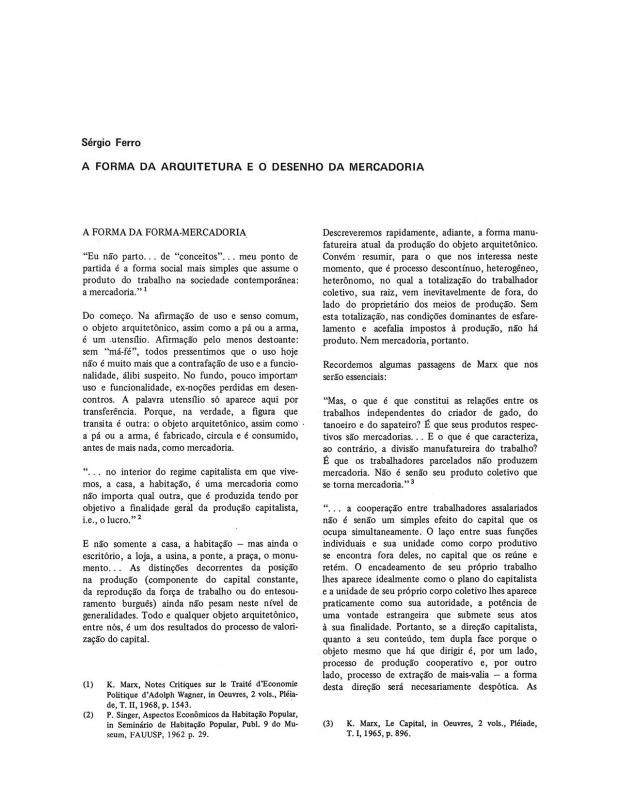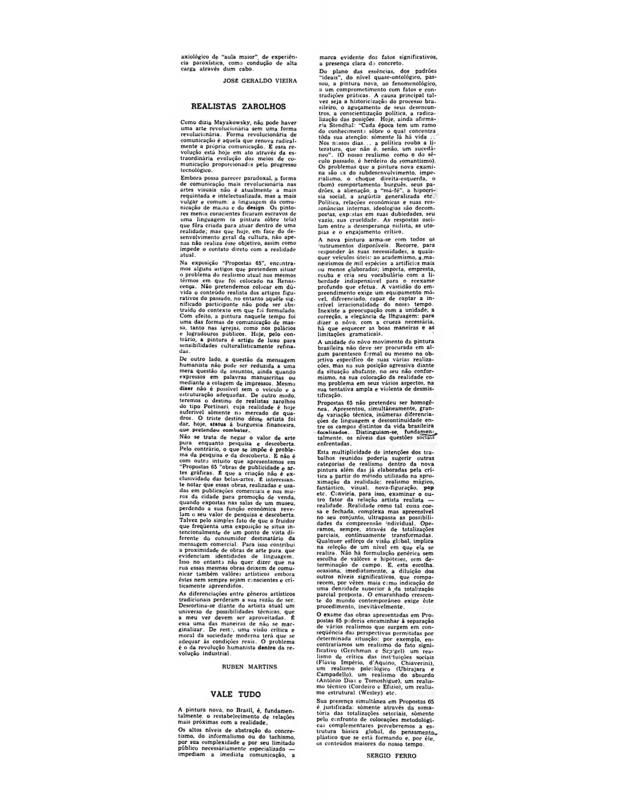Architect and visual artist Sérgio Ferro (b. 1938) graduated while Brasilia was under construction (1956–61); he worked for the architect Francisco Vilanova Artigas (in São Paulo), who was also his teacher, as was Flávio Motta. Ferro, Rodrigo Lefèvre (another architect), and the set designer Flávio Império started the group Nova Arquitetura. Ferro was a fierce critic of the profession, of its medium (drawing), and of what it produced. While still a student, he proposed discussing class struggle and the desirability of creating an alliance between construction workers and drawing specialists that could generate a different aesthetic based on “a poetics of the economy” that would address truly national problems. Both Ferro and Lefèvre had to get out of Brazil during the military dictatorship (1964–85); Ferro became a professor of architecture at the Université de Grenoble (France) in 1972; Lefèvre met a tragic death on a construction site in Guinea-Bissau in the mid-1980s.
In this article, Ferro is still criticizing the semiotic theory he learned in Italy in 1965 from Umberto Eco. This is undoubtedly one of Ferro’s most caustic articles, which became the basis for the discussion he initiated in 1976 in “O Canteiro e o desenho” [The Jobsite and the Drawing]. The magazine Teoria e Prática was published over a period of two years (1967–68) and was then shut down by the military dictatorship on the grounds that it was discussing subjects related to Brazilian international culture and social sciences.
[As complementary reading, see the following articles by the author in the ICAA digital archive: “A forma da arquitetura e o desenho da mercadoria” (doc. no. 1111152); “Os limites da denúncia” (doc. no. 771159); “Pintura nova” (doc. no. 1090696); and “Vale tudo” (doc. no. 1090648)].



